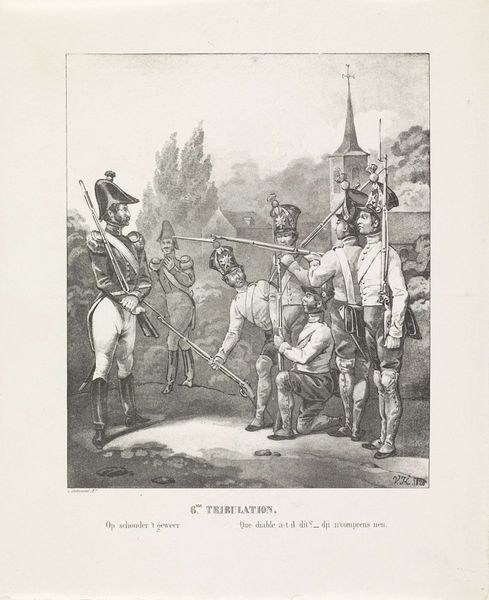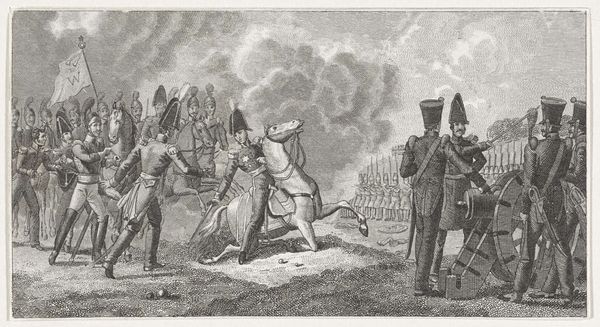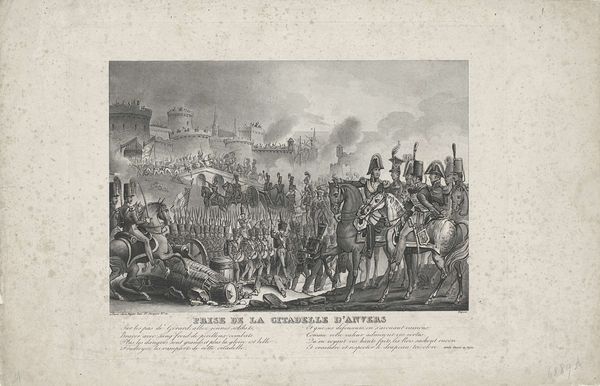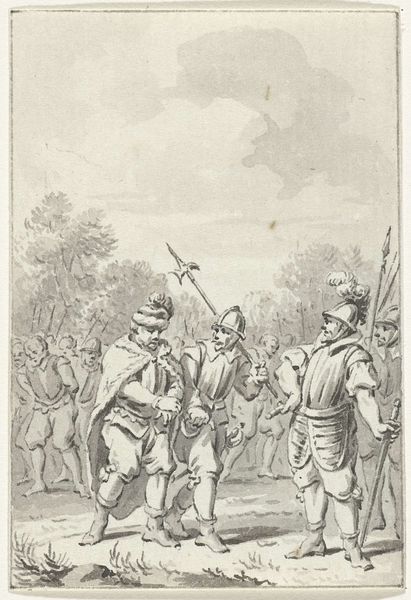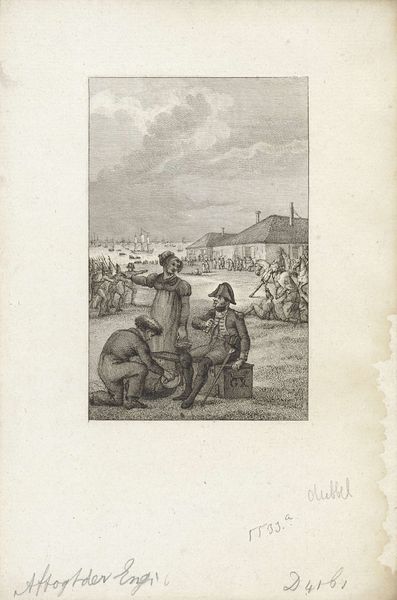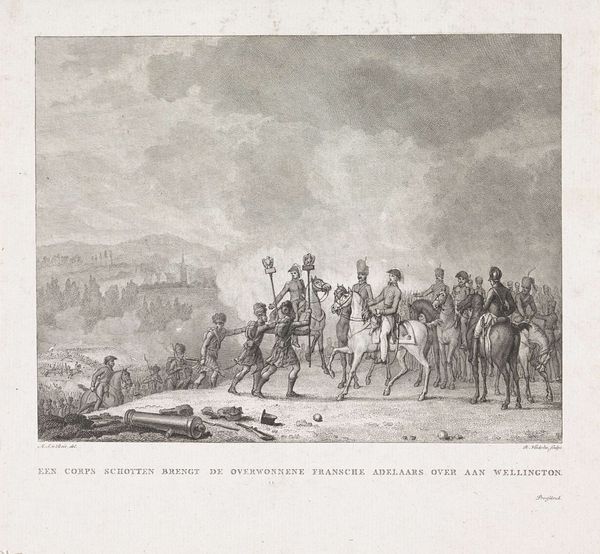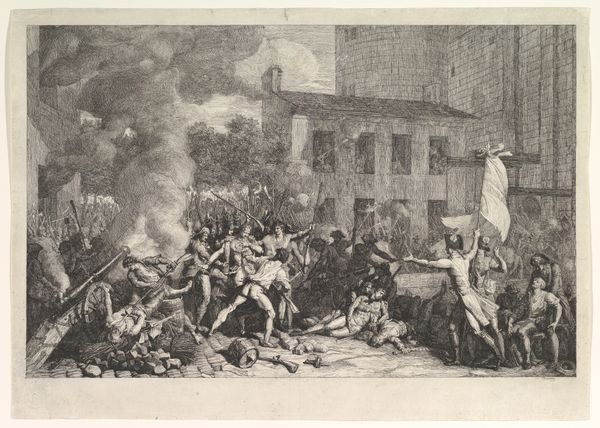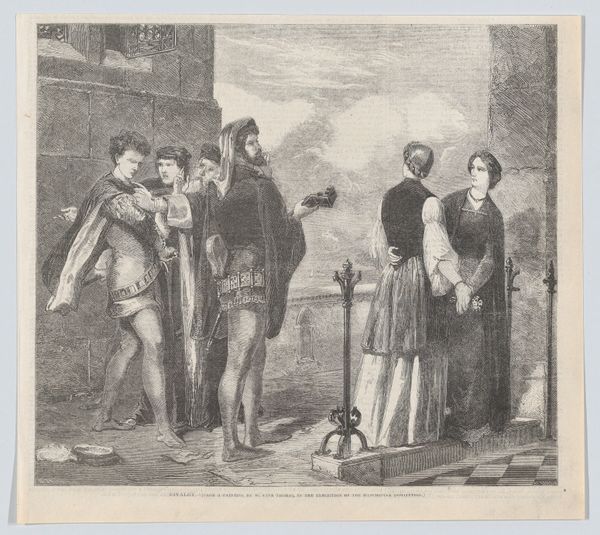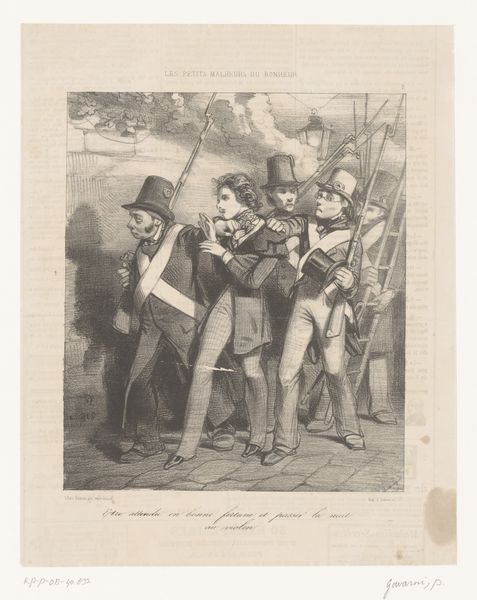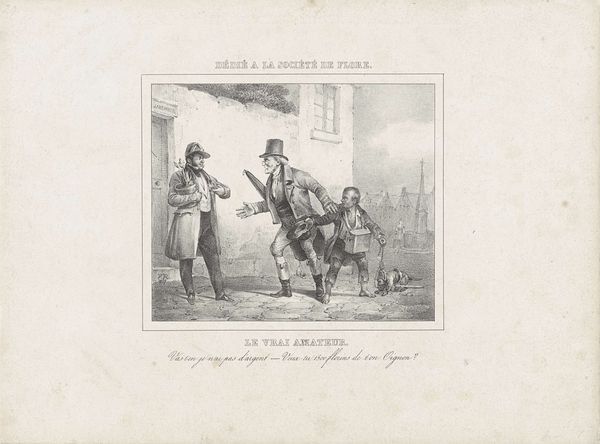
print, engraving
#
narrative-art
# print
#
old engraving style
#
figuration
#
romanticism
#
history-painting
#
engraving
Dimensions: height 268 mm, width 222 mm
Copyright: Rijks Museum: Open Domain
Editor: This engraving is called "Negende beproeving" – "Ninth Tribulation" – by Jean-Louis Van Hemelryck, made in 1828. It depicts four uniformed figures, possibly soldiers. What strikes me is the incredible detail achieved through engraving. How would you approach interpreting a piece like this? Art Historian: Let's look at the material realities first. As a print, this wasn't a unique object. How many were made? Where were they circulated? This reproductive quality suggests wider dissemination, influencing a broader audience. What would the societal position be of an artisan capable of crafting such works in 1828 Belgium? The Romantic style seems at odds with this depiction of a rank of common infantrymen and we need to understand the socioeconomics of its production. Editor: That's a perspective I hadn't considered. I was focused on the men themselves and trying to discern a narrative within the image! Are you suggesting the story within the artwork is less important than its method of distribution? Art Historian: Not necessarily less important, but intertwined. How does the accessibility of this image through printmaking influence its reception and the message it conveys about power, class, and militarization? Does its potential widespread access alter assumptions concerning its symbolic purpose? Was it pro or anti the governing political order? Consider how these elements combine to build or question authority. Editor: So, you're prompting us to think beyond the surface, the artistic 'genius' if you will, and think about who had access, and ultimately control of, disseminating these types of images. It’s changed my perspective for sure. I will remember that approach.
Comments
No comments
Be the first to comment and join the conversation on the ultimate creative platform.

